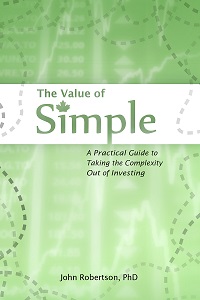Guide to Canadian Taxes for Freelancers: Introduction
February 1st, 2016 by PotatoThis post series is now available as a PDF for download.
Introduction
If you find yourself as an entrepreneur, freelancer, or contractor, how do you end up doing all the tax and accounting stuff?
There is a plethora of information on the CRA’s website, but it’s quite difficult (IMHO) to find the actual answers you’re looking for, because all that information is broken up across hundreds of forms, help files, guides, and interpretation bulletins. Even when you find what you need, understanding it can be difficult or vague and confusing (you may have to…). Combined with the fact that people tend to look up tax information at the last minute in tax season and that taxes are confusing and stressful at the best of times, oh and that the onus is on the taxpayer to figure it all out and it can seem hopeless.
One year while struggling to correctly fill out Wayfare’s taxes, she remarked that we have two master’s degrees and a doctorate between us, as well as a giant finance NEEEEERRRRRRDDDDD. How did normal people do it?
So here is a mini-guide to being a sole proprietor (aka freelancer aka having a side business).
- Part 1: Entrepreneurship in Canada, Where to Start
- Part 2: Record-Keeping and Getting Paid
- Part 3: Taxes, T2125, Net Income
- Part 4: Sales Tax, HST Registration
- Part 5: Example: Stormageddon Editorial Example
- Bonus: Freelancing Finances Spreadsheet
[Part 1 is below, stay tuned for the other parts over the rest of the week]
Disclaimer: I’m not an accountant, and even if I was, I’m not sitting with you looking at your personal tax and business situation. Unfortunately, the onus is still on you to make sure that you’re filing correctly. I hope that this guide will be a useful first start, but that’s as much as it can be.
Part 1: Entrepreneurship in Canada, Where to Start
Canada is a very friendly country if you want to start your own business. Here is what you need to do to become a freelancer/entrepreneur/self-employed/sole proprietorship:
1. Start doing business.
That’s it. The rest of this guide will talk about how to handle the money when it’s coming in and pay taxes on that, etc., but there is absolutely nothing standing in your way if you see an opportunity to perform a service or sell a good — you can start your business on the fly and figure the rest out later.
Now that’s a bit simplistic, sure. You don’t need to register for a corporation number, get approval from a business registry, or possess a special license to make some side income or start a small business in general. But eventually some of those things may come into play. And depending on what you do there will be some restrictions or requirements for specific industries. For example, there’s nothing in my way of becoming a freelance editor, but if I wanted to become a self-employed cab driver I would need to get a taxi plate and have my car inspected. There’s nothing stopping me from selling hand-knit socks or reselling guitars, but there are health and safety regulations if I wanted to sell cookies and other food products, and licenses I would need to sell mutual funds or insurance.
If you just do business as yourself, that is under your own personal legal name, there’s no registration to be done. If you want to use the snazzy business name that you came up with, you’ll have to register that name with your province. So for example if I’m performing editing services and bill clients as “John Potato” (assuming for the moment that’s my real name) then all is well. If I want to put my snazzy “Stormageddon Editorial Services” at the top of my invoices, then I’ll need to register that name with the province, which in Ontario costs $60 for 5 years.
So if you’ve got an idea and an opportunity for a business venture or some freelance income, go ahead and get on it — you can sort the other stuff out in short order.



 Questrade: ETFs are free to trade, and if you sign up with my link you'll get $50 cash back (must fund your account with at least $250 within 90 days).
Questrade: ETFs are free to trade, and if you sign up with my link you'll get $50 cash back (must fund your account with at least $250 within 90 days).  Passiv is a tool that can connect to your Questrade account and make it easier to track and rebalance your portfolio, including sending you an email reminder when new cash arrives and is ready to be invested.
Passiv is a tool that can connect to your Questrade account and make it easier to track and rebalance your portfolio, including sending you an email reminder when new cash arrives and is ready to be invested.